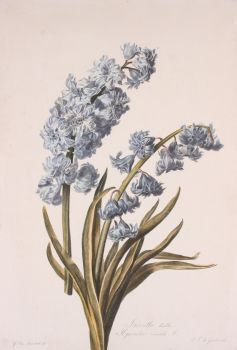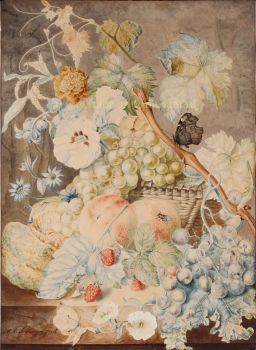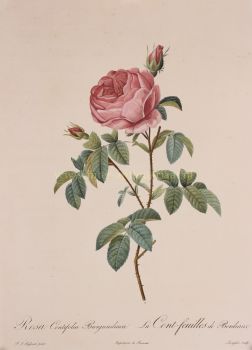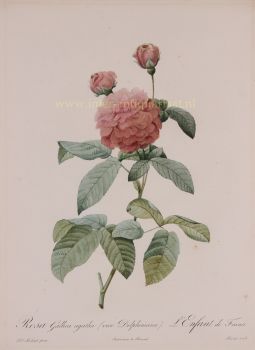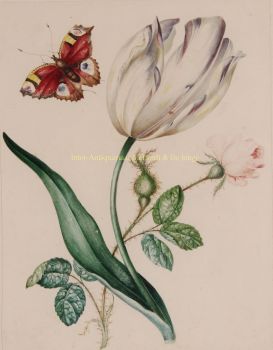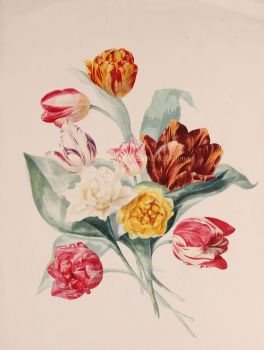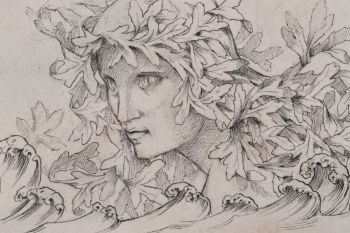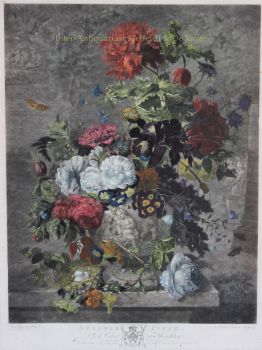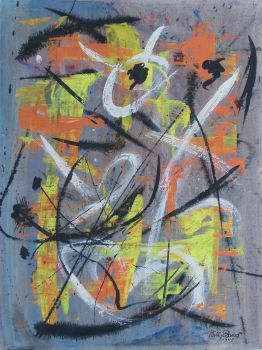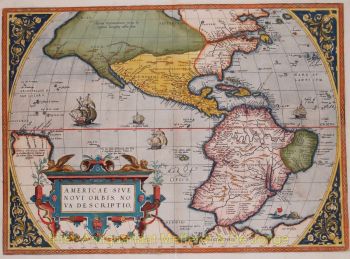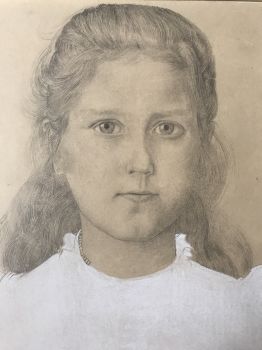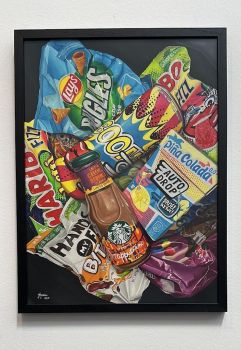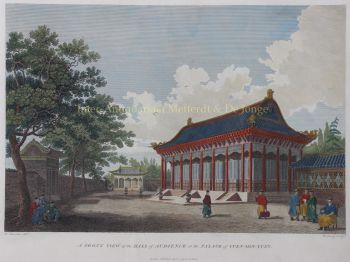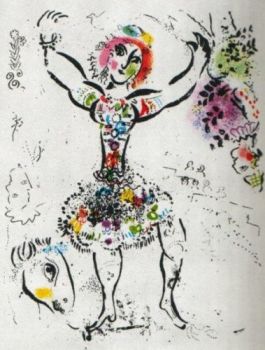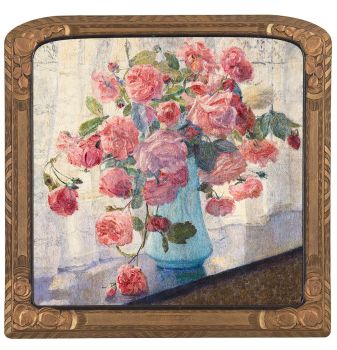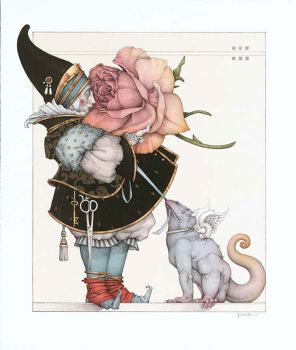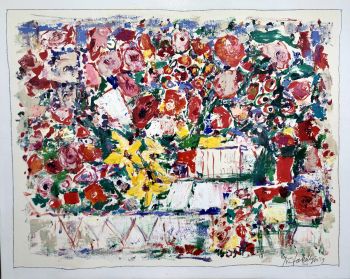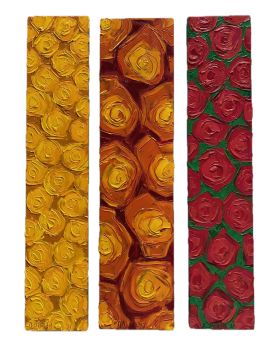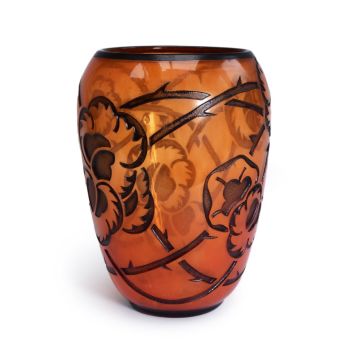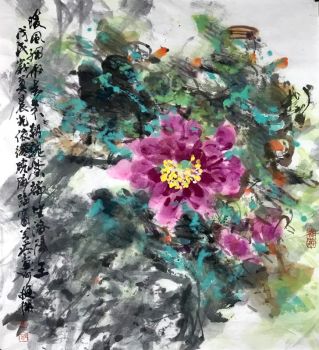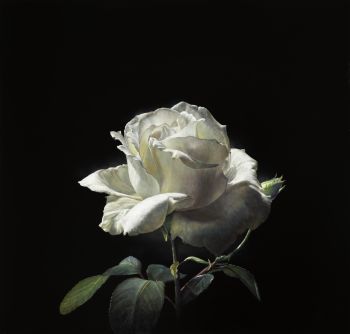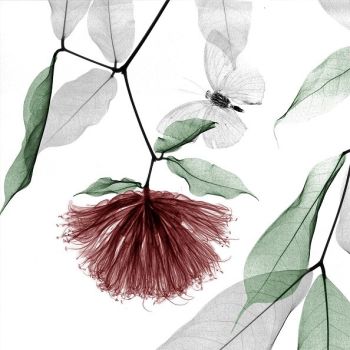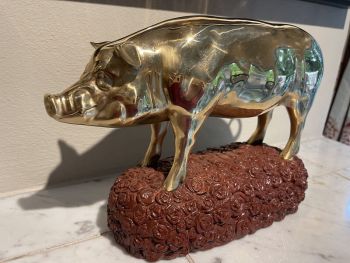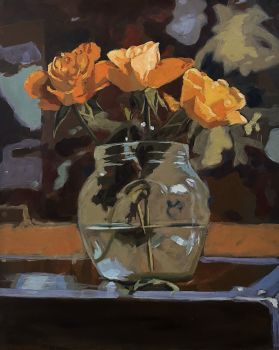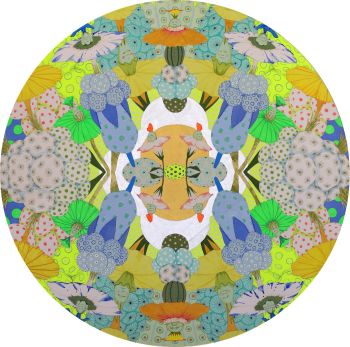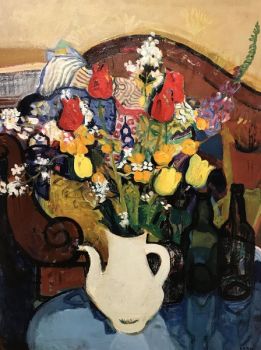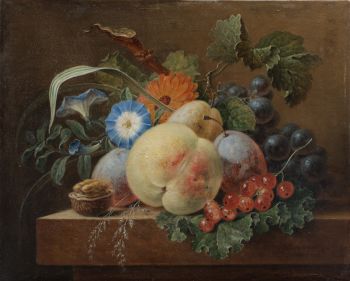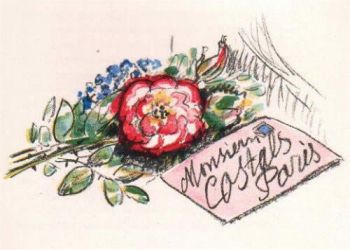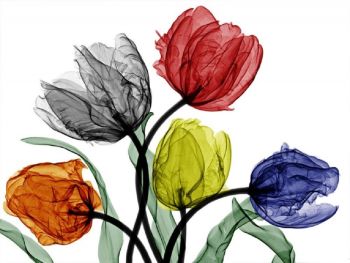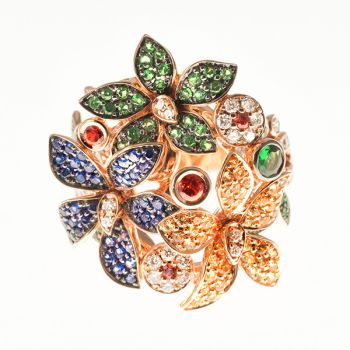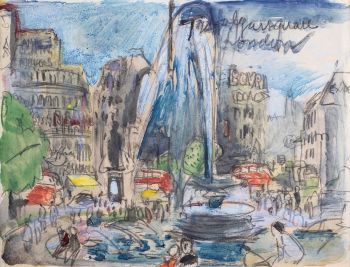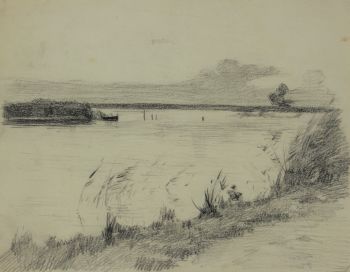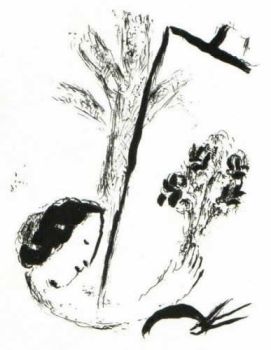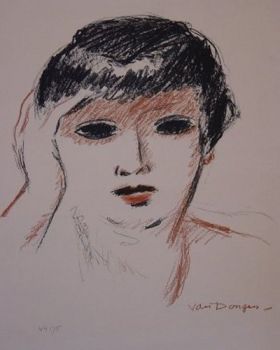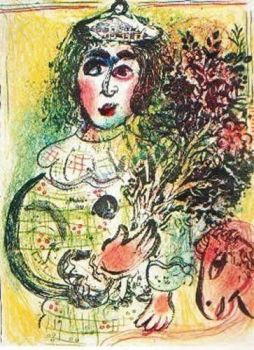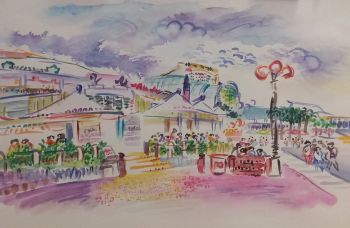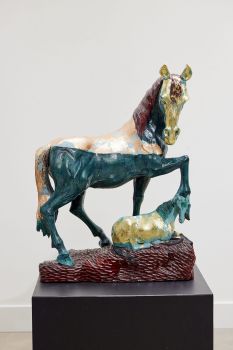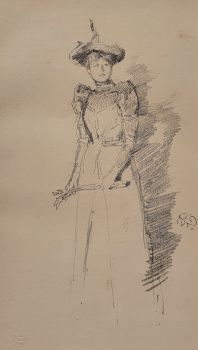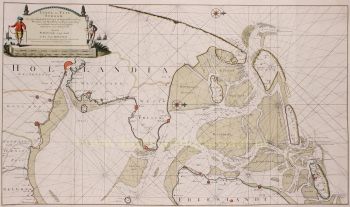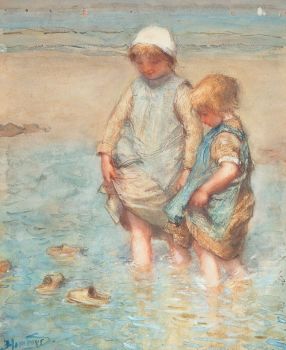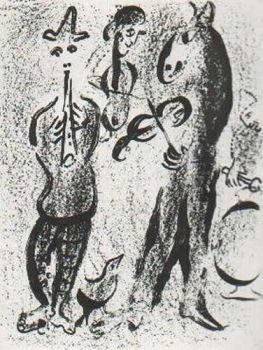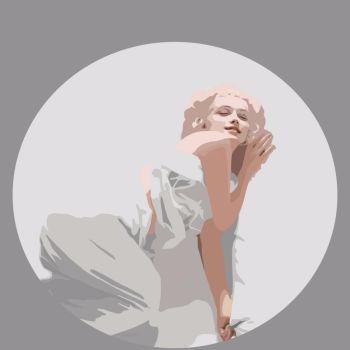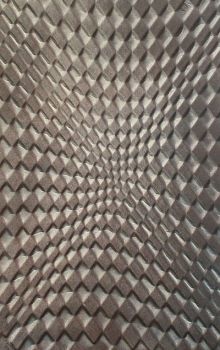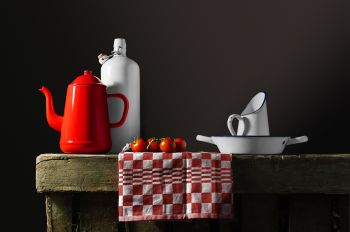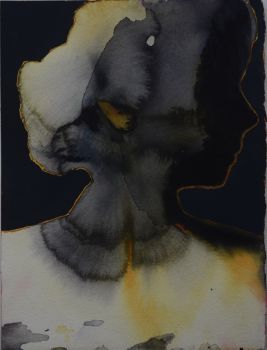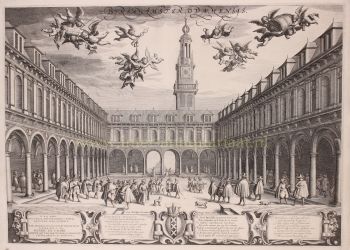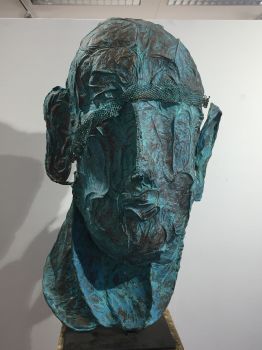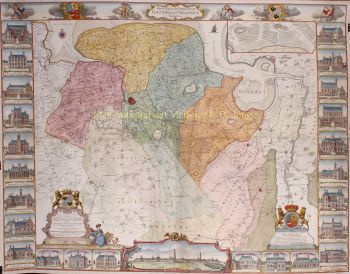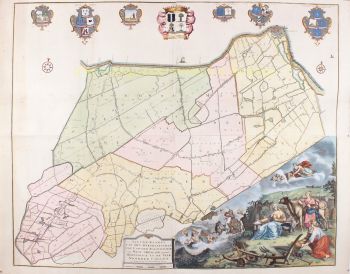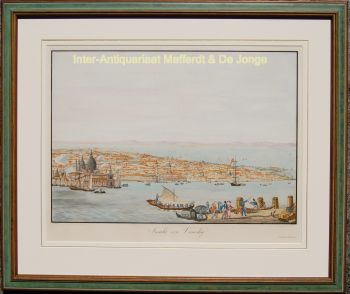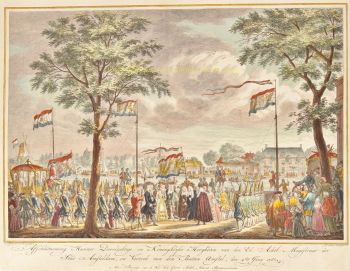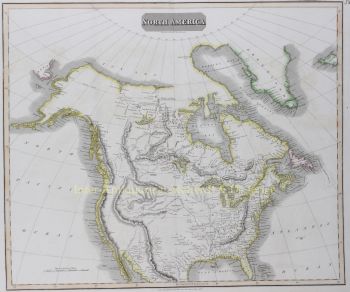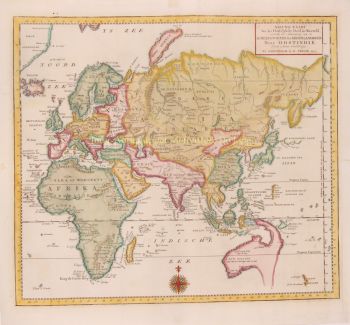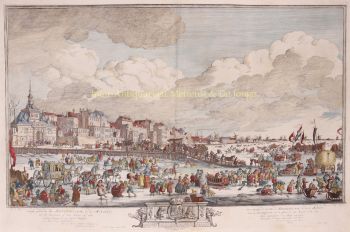Rose 1799
Gerard van Spaendonck
Papier
50 ⨯ 33 cm
€ 1.250
Inter-Antiquariaat Mefferdt & De Jonge
- Sur l'oeuvre d'artRose a cent feuilles [rose with one hundred petalls) or cabbage rose, stippel engraving made by P.F. le Grand after a drawing by Gerard(us) van Spaendonck from the Fleurs dessinées d'après nature, published between 1799 and 1801. With original hand colouring. Size. (print) approx. 50 x 33 cm. The Centifolia roses date from around 1550. Although once regarded as forms of a species, they are now thought most likely to be hybrids between the autumn damask and an alba rose. Centifolias are usually compact bushes with heavy double flowers which often droop under there own weight. The colours varied from white to deep rose red plus striped and spotted varieties. They were much featured in the paintings of the Dutch masters and came to be known as "The rose of the painters". It has fragrant, mid pink, double flowers, the buds of which are covered in fine tubercles or filaments known as moss. Mosses are natural mutations which first occurred on Damask and Centifolia roses. They were very fashionable in the early eighteenth and nineteenth centuries when several hundred forms were raised. Gerard van Spaendonck (1756-1842) studied with decorative painter Willem Jacob Herreyns in Antwerp. In 1769 he moved to Paris, where in 1774 he was appointed miniature painter in the court of Louis XVI. In 1780 he succeeded Madeleine Françoise Basseporte as professor of floral painting at the Jardin des Plantes, and was elected a member of the Académie des beaux-arts shortly afterwards. Van Spaendonck contributed to over fifty works of Les Vélins du Roi, a famous collection of botanical watercolours owned by French royalty. From 1799 to 1801 he published twenty-four plates as part of his Fleurs Dessinees d'apres Nature (Flowers Drawn from Life), which were high-quality engravings for students of floral painting. Today the Fleurs Dessinees d'apres Nature are considered among the best botanical engravings in the world. Stipple engravings with which one is able to differentiate between different tones of gray, turned out to be highly suitable for depicting botanical details, a method that Van Spaendonck also taught his pupil Pierre-Joseph Redouté. Like other famous flower painters, Van Spaendonck was also technically perfect: in oil, watercolour, pen or pencil, on any scale. With attention to every minute detail and elegance and sophistication of the composition, he shows his mastery. Like Jan van Huysum, Van Spaendonck understood the zeitgeist and created flower compositions that matched the taste of the public of around 1800. He combined the traditional Dutch way of representing flowers with French sophistication and good taste. Price: Euro 1.250,-
- Sur l'artiste
Gérard était un frère aîné de Cornelis van Spaendonck (1756-1840), qui était également un peintre bien connu. Dans les années 1760-1769, il étudie à Anvers avec le peintre décorateur Willem Herreyns. En 1769, il s'installe à Paris, et en 1774, par l'intermédiaire de Claude-Henri Watelet, à l'âge de 28 ans, il est nommé peintre miniature à la cour de Louis XVI. Il expose pour la première fois en 1777. En 1780, il succède à Françoise Basseporte (1701-1780) comme professeur de peinture florale au Jardin des Plantes. Peu de temps après, il est élu membre de l'Académie des beaux-arts.
Van Spaendonck a peint à la fois à l'huile et à l'aquarelle. Il a réalisé plus de cinquante œuvres pour les Vélins du Roi, une célèbre collection d'aquarelles botaniques appartenant à la famille royale française. De 1799 à 1801, il publie 24 planches de ses Fleurs Dessinées d'après Nature (Fleurs dessinées d'après nature); gravures de haute qualité pour les étudiants en peinture de fleurs. Aujourd'hui Fleurs dessinées d'après nature est un livre très apprécié dans le domaine de la peinture florale.
En 1788, Van Spaendonck est nommé conseiller de l'Académie et, en 1795, il est l'un des fondateurs de l'Institut de France. En 1804, il est décoré de la Légion d'honneur. Peu de temps après, il est anobli par Napoléon Bonaparte. Van Spaendonck est mort en 1822 à l'âge de 76 ans.
Au Groeseindstraat 99 à Tilburg, une plaque peut être vue à l'endroit où se trouvait la maison natale des frères Van Spaendonck. Outre le peintre Karel Appel, Gerard van Spaendonck est le seul Néerlandais à être enterré au Père Lachaise à Paris. Gérard est juste derrière la tombe de Chopin.
Êtes-vous intéressé par l'achat de cette oeuvre?
Artwork details
Related artworks
- 1 - 1 / 1
- 1 - 4 / 24
- 1 - 4 / 24
- 1 - 4 / 24
- 1 - 4 / 12


